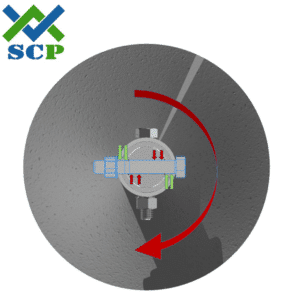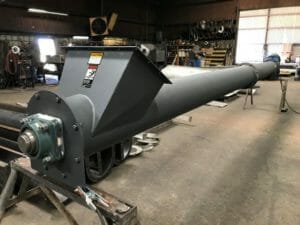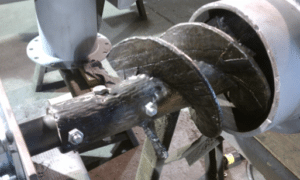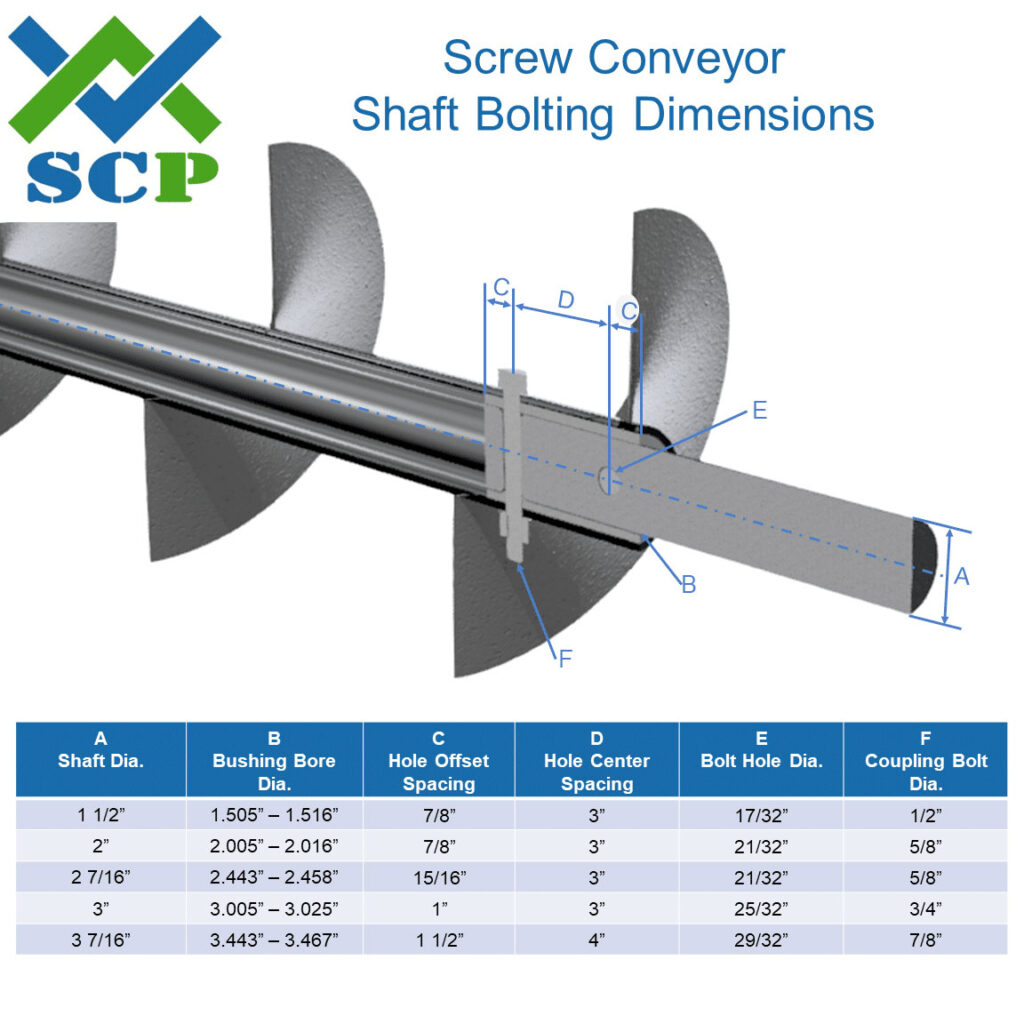Screw conveyors are standardized through CEMA based on the screw outside diameter and the shaft outside diameter making these the 2 most important facts to know about a screw conveyor when sizing, designing or buying replacement parts. The 3rd most important fact to know about your screw conveyor is how many coupling bolts are used to connect the drive, coupling or tail shaft to the screw. The coupling bolt diameter and location are standardized based on the shaft outside diameter. The standard is 2 coupling bolts drilled 180deg apart and at the specified locations but 3-bolt and even 4-bolt are used in some cases. There are some factors discussed below that must be considered when determining the number of coupling bolts.
Torque

The #1 determining factor of how many coupling bolts are required is the torque produced by the screw conveyor drive. In a way, the torque is like water flowing from the screw conveyor drive to the driveshaft, coupling bolts, screw bushing, pipe and then to the flights which convey the material along the length of the screw. (In reality it is the power that flows like this but we can visualize the torque in this way also) There are two specific factors to consider when calculating the coupling bolt quantity and that is the shear stress and the bearing stress. The shear stress is the stress (force/torque) trying to slice the coupling bolts in half and is located at the point where the shaft and bushing meet. The bearing stress is the stress (force/torque) where the coupling bolts are pushing on the bushing trying to crush the bolts, bushing and pipe. When the stress exceed the allowable for any of these screw components another coupling bolt is added to make a 3-bolt connection, therefor increasing the strength of the connection by 50%.
Screw Length
Standard screw lengths are either 10ft or 12ft, depending on the diameter of the screw. In some cases, longer screws are used and, in a few cases, very long screw are used reaching lengths greater



